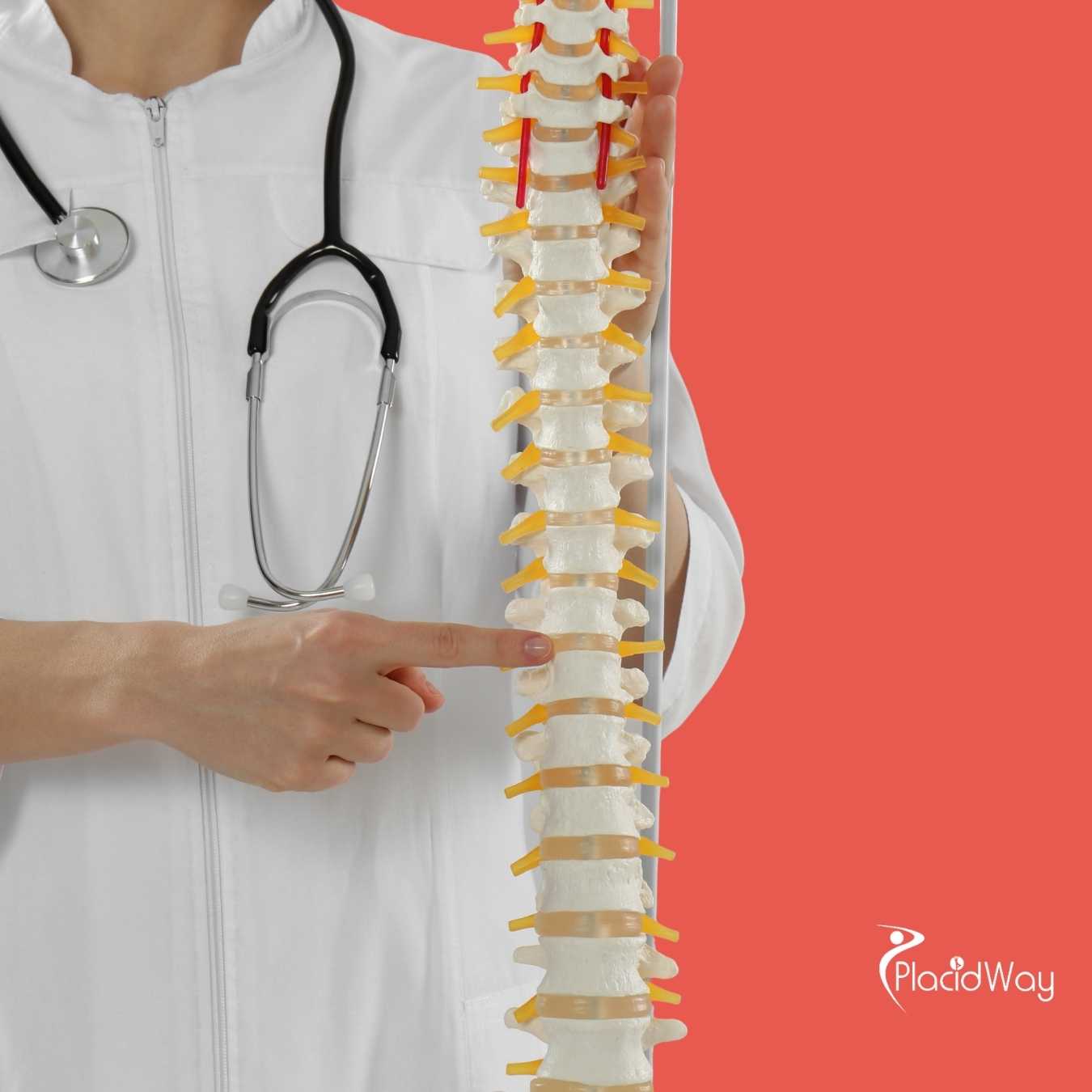Discover 3 Major Illnesses That Benefit from Stem Cell Therapy
.png)
Have you ever wondered about the incredible potential hidden within our bodies to heal and regenerate? That potential lies, in part, with stem cells. These remarkable cells are the body's raw materials, capable of developing into many different cell types, from muscle cells to brain cells. What makes them truly special is their ability to divide and renew themselves, and to become specialized cells when needed. This unique characteristic has positioned stem cell therapy as a groundbreaking field in regenerative medicine, offering new hope for treating a wide array of diseases and injuries that were once considered incurable.
The scientific advancements in understanding and utilizing stem cells have opened doors to innovative treatments. While research continues to unfold, certain illnesses have already seen significant breakthroughs and established therapeutic applications thanks to stem cell interventions. In this blog post, we'll explore three prominent examples of illnesses that can be effectively treated with stem cells: certain forms of leukemia, spinal cord injuries, and Parkinson's disease, diving into how these treatments work and the impact they have on patients' lives.
What are the three primary illnesses treated with stem cells?
Stem cells offer transformative treatments for specific types of leukemia, severe spinal cord injuries, and Parkinson's disease. In leukemia, a type of cancer affecting blood and bone marrow, hematopoietic stem cell transplantation (HSCT) is a standard and often life-saving treatment. This procedure replaces diseased or damaged bone marrow with healthy blood-forming stem cells, allowing the body to produce new, healthy blood cells. It's a critical therapy for many patients with aggressive forms of the disease.
For spinal cord injuries, stem cell research is focused on repairing damaged nerve tissue and promoting neurological recovery. Various types of stem cells, including mesenchymal and neural stem cells, are being investigated for their ability to reduce inflammation, protect existing nerve cells, and even regenerate new ones, potentially restoring lost motor and sensory function. In Parkinson's disease, a progressive neurodegenerative disorder, the goal of stem cell therapy is to replace the dopamine-producing neurons that are lost in the brain, which are responsible for controlling movement. By transplanting new, healthy neurons derived from stem cells, researchers hope to alleviate the debilitating motor symptoms associated with the condition.
How do stem cells treat leukemia?
The treatment of leukemia with stem cells primarily involves a procedure known as Hematopoietic Stem Cell Transplantation (HSCT), often referred to as a bone marrow transplant. This critical therapy is used to replace unhealthy, cancerous blood-forming cells in the bone marrow with healthy ones. Before the transplant, patients typically undergo high-dose chemotherapy or radiation therapy to destroy the existing diseased bone marrow cells and suppress the immune system, creating space for the new healthy cells.
Following this conditioning regimen, healthy hematopoietic stem cells are infused into the patient's bloodstream. These stem cells can come from a donor (allogeneic transplant) or, less commonly, from the patient's own previously collected cells (autologous transplant). Once infused, the stem cells travel to the bone marrow, where they "engraft" and begin to produce new, healthy blood cells, including red blood cells, white blood cells, and platelets. This process rebuilds the patient's immune system and replaces the cancerous cells, offering a chance for long-term remission or cure from leukemia. The success of this stem cell treatment relies heavily on finding a suitable donor match and careful post-transplant care to manage potential complications.
Can stem cells repair spinal cord injuries?
The use of stem cells in treating spinal cord injuries (SCI) is a rapidly advancing area of research with significant promise. SCI often results in permanent neurological deficits due to the loss of nerve cells, damage to myelin (the protective sheath around nerves), and the formation of scar tissue that inhibits regeneration. Stem cells are being investigated for their multifaceted abilities to counteract these devastating effects. They can differentiate into various cell types, including neurons and glial cells, which are crucial components of the spinal cord.
Different types of stem cells, such as mesenchymal stem cells (MSCs), neural stem cells (NSCs), and induced pluripotent stem cells (iPSCs), are being explored. When transplanted into the injured spinal cord, these cells can help in several ways: they can replace lost cells, secrete growth factors that promote the survival and regeneration of existing neurons, reduce inflammation, and inhibit the formation of scar tissue. Clinical trials are underway globally, showing encouraging results in some patients, including improvements in motor and sensory functions. While a complete cure is still a future goal, stem cell treatments offer a significant pathway toward improved outcomes for individuals with SCI.
What role do stem cells play in Parkinson's disease treatment?
Parkinson's disease is characterized by the progressive degeneration of dopamine-producing neurons in a specific area of the brain called the substantia nigra. The loss of these neurons leads to the classic motor symptoms of Parkinson's, including tremors, rigidity, bradykinesia (slow movement), and postural instability. Current treatments primarily manage symptoms but do not halt or reverse the neurodegeneration. This is where stem cell therapy offers a revolutionary approach by aiming to replace the lost dopamine-producing neurons directly.
Researchers are focusing on generating healthy dopaminergic neurons from various stem cell sources, such as human embryonic stem cells (hESCs) or induced pluripotent stem cells (iPSCs). These lab-grown neurons are then transplanted into the patient's brain. The hope is that these new neurons will integrate into the existing neural networks, begin producing dopamine, and effectively restore normal motor function. While still largely in the clinical trial phase, early results have been promising, with some patients showing significant improvements in their motor symptoms and a reduction in the need for traditional medications. This targeted stem cell treatment offers a potential path to a long-term solution rather than just symptom management.
What are the different types of stem cells used in therapy?
The field of stem cell therapy utilizes several distinct types of stem cells, each with unique properties and applications. Embryonic Stem Cells (ESCs) are pluripotent, meaning they can differentiate into any cell type in the body. They are derived from embryos and offer immense therapeutic potential due to their versatility, though their use raises ethical considerations. Induced Pluripotent Stem Cells (iPSCs) are adult cells that have been genetically reprogrammed in the lab to an embryonic-like pluripotent state. They share many characteristics with ESCs but can be derived from a patient's own cells, reducing issues of immune rejection and ethical concerns.
Adult Stem Cells are multipotent or unipotent, meaning they can differentiate into a limited number of cell types or just one cell type, respectively. The most common types used in therapy include:
- Hematopoietic Stem Cells (HSCs): Found in bone marrow and umbilical cord blood, these are crucial for treating blood cancers like leukemia and various blood disorders.
- Mesenchymal Stem Cells (MSCs): Found in bone marrow, fat tissue, and other connective tissues, MSCs have immunomodulatory properties and can differentiate into bone, cartilage, and fat cells, making them valuable for orthopedic and autoimmune conditions.
Each type of stem cell has specific advantages and challenges, dictating their suitability for different stem cell treatments and research applications.
Is stem cell therapy approved for all conditions?
It is crucial to understand that not all stem cell therapies are approved or recognized as standard medical treatments. The regulatory landscape for stem cell treatments varies significantly across different countries and for different conditions. In many parts of the world, including the United States (by the FDA) and Europe (by the EMA), only hematopoietic stem cell transplants for blood-related diseases (like leukemia, lymphoma, and certain genetic blood disorders) are widely approved and routinely practiced. These treatments have a long history of success and are backed by extensive clinical evidence.
However, a vast number of other stem cell treatments being marketed for various conditions, ranging from autism and chronic pain to anti-aging, are largely unproven and considered experimental. Many of these therapies lack rigorous scientific evidence from well-designed clinical trials to support their safety and efficacy. Patients considering stem cell therapy for conditions outside of established blood disorders should exercise extreme caution, consult with reputable medical professionals, and verify that any proposed treatment is part of an approved clinical trial or is an established, regulated therapy. Engaging in unproven stem cell treatments can pose significant health risks and financial burdens.
What are the potential risks and side effects of stem cell treatment?
While stem cell treatment holds immense promise, it is not without potential risks and side effects, particularly for unproven or unregulated therapies. One common risk with any medical procedure is infection, which can occur at the injection site or become systemic. Another significant concern, especially with allogeneic (donor) stem cell transplants, is immune rejection. The recipient's immune system may recognize the donor stem cells as foreign and attack them, leading to graft-versus-host disease (GVHD), a serious and potentially life-threatening complication.
For some types of stem cells, particularly pluripotent cells like ESCs or iPSCs, there is a theoretical risk of uncontrolled growth or tumor formation (teratomas) if the cells are not properly differentiated or purified before transplantation. Additionally, any invasive procedure carries general risks such as bleeding, pain, or nerve damage. When considering unproven stem cell treatments, patients face heightened risks, including ineffective therapy, serious adverse reactions from improperly prepared cells, contamination, or exaggerated claims. Always discuss the comprehensive risk profile with a qualified and ethical medical provider when exploring stem cell treatment options.
How can medical tourism help access stem cell treatments for specific diseases?
Medical tourism has emerged as a significant pathway for patients seeking specialized healthcare, including stem cell treatments, for various diseases. One primary reason is the availability of specific therapies that might not be approved or widely offered in a patient's home country. This can be due to differing regulatory environments, a lack of local expertise, or the fact that certain advanced stem cell treatments are still in experimental phases or clinical trials conducted abroad. Patients might also look overseas for cutting-edge treatments that are at the forefront of regenerative medicine development.
Another compelling factor is cost. The expense of stem cell therapy can be prohibitive in some countries, leading patients to seek more affordable options in destinations known for high-quality, yet more cost-effective, medical care. However, it is crucial to differentiate between reputable clinics offering legitimate, evidence-based stem cell treatments or approved clinical trials, and clinics that offer unproven and potentially dangerous therapies. Careful research and due diligence are paramount when considering medical tourism for stem cell treatment, ensuring that the chosen facility adheres to international safety and ethical standards.
Which countries are known for advanced stem cell therapy through medical tourism?
Several countries have gained recognition in the field of stem cell therapy and attract patients through medical tourism. These destinations often have advanced research facilities, less stringent regulatory environments for certain therapies, or a focus on specific regenerative medicine applications. Germany is known for its strong scientific and medical infrastructure, offering some stem cell treatments under strict regulatory oversight, particularly for orthopedic and neurological conditions. South Korea has invested heavily in biotechnology and stem cell research, with several clinics and hospitals offering treatments for conditions like spinal cord injury and Parkinson's disease, often backed by significant government funding and research.
Japan is also a leader in regenerative medicine, with a supportive regulatory framework that has facilitated the clinical application of some stem cell therapies. This has made it an attractive destination for patients seeking innovative treatments. Additionally, certain countries in the Caribbean and Central America have become popular for medical tourism related to stem cell therapy, often due to more permissive regulations for experimental treatments. However, when considering these options, it is essential for patients to thoroughly investigate the clinic's reputation, the scientific validity of the proposed stem cell treatment, and the qualifications of the medical staff to ensure safety and efficacy.
What should I consider when planning stem cell treatment abroad via medical tourism?
Planning stem cell treatment abroad requires meticulous research and careful consideration to ensure a safe and effective outcome. First and foremost, investigate the clinic's legitimacy and accreditation. Look for facilities that are internationally accredited (e.g., JCI) and have a strong track record. Verify the qualifications and experience of the physicians and medical staff who will be performing the stem cell treatment. Ensure they are board-certified specialists in the relevant field. Understand the regulatory environment of the country you are considering; some countries have more robust oversight than others, which directly impacts patient safety and ethical practices.
Furthermore, thoroughly understand the proposed stem cell treatment protocol. Ask for detailed information on the type of stem cells used, their source, the method of administration, and the expected outcomes and potential risks. Be wary of clinics that promise miracle cures or use overly aggressive marketing tactics. Always consider the total cost, including the procedure, travel, accommodation, and any necessary follow-up care, which is often overlooked. It's also vital to have a clear plan for post-treatment care and rehabilitation, and how this will be managed once you return home. Consulting with a medical tourism facilitator can help navigate these complexities, but independent verification remains essential for any stem cell treatment decision.
Exploring advanced medical treatments like stem cell therapy can be complex. If you're considering international options or need guidance on finding reputable healthcare providers, visit PlacidWay. We connect you with world-class clinics and specialists to help you make informed decisions about your health journey.


.png)


-Package-in-Kuala-Lumpur,-Malaysia-by-FirstCell.jpg)






Share this listing